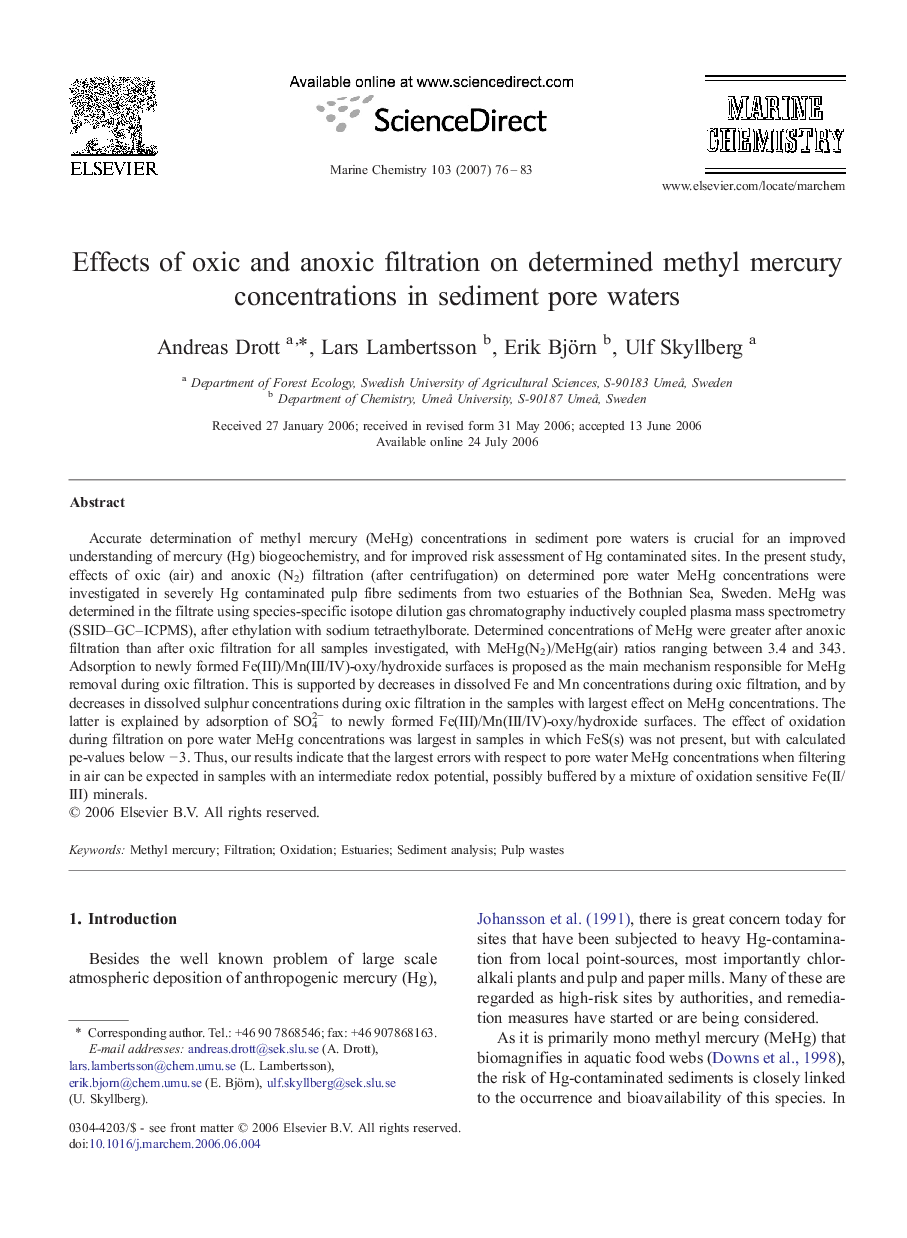| Article ID | Journal | Published Year | Pages | File Type |
|---|---|---|---|---|
| 1262341 | Marine Chemistry | 2007 | 8 Pages |
Accurate determination of methyl mercury (MeHg) concentrations in sediment pore waters is crucial for an improved understanding of mercury (Hg) biogeochemistry, and for improved risk assessment of Hg contaminated sites. In the present study, effects of oxic (air) and anoxic (N2) filtration (after centrifugation) on determined pore water MeHg concentrations were investigated in severely Hg contaminated pulp fibre sediments from two estuaries of the Bothnian Sea, Sweden. MeHg was determined in the filtrate using species-specific isotope dilution gas chromatography inductively coupled plasma mass spectrometry (SSID–GC–ICPMS), after ethylation with sodium tetraethylborate. Determined concentrations of MeHg were greater after anoxic filtration than after oxic filtration for all samples investigated, with MeHg(N2)/MeHg(air) ratios ranging between 3.4 and 343. Adsorption to newly formed Fe(III)/Mn(III/IV)-oxy/hydroxide surfaces is proposed as the main mechanism responsible for MeHg removal during oxic filtration. This is supported by decreases in dissolved Fe and Mn concentrations during oxic filtration, and by decreases in dissolved sulphur concentrations during oxic filtration in the samples with largest effect on MeHg concentrations. The latter is explained by adsorption of SO42− to newly formed Fe(III)/Mn(III/IV)-oxy/hydroxide surfaces. The effect of oxidation during filtration on pore water MeHg concentrations was largest in samples in which FeS(s) was not present, but with calculated pe-values below − 3. Thus, our results indicate that the largest errors with respect to pore water MeHg concentrations when filtering in air can be expected in samples with an intermediate redox potential, possibly buffered by a mixture of oxidation sensitive Fe(II/III) minerals.
